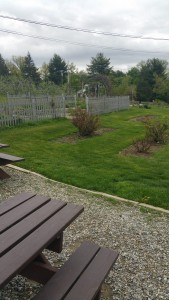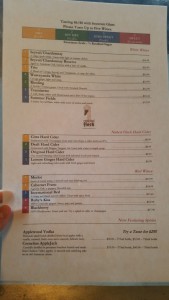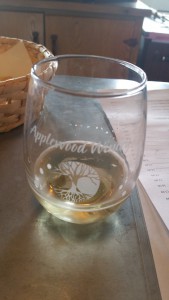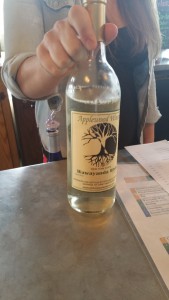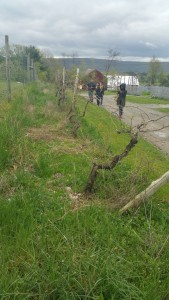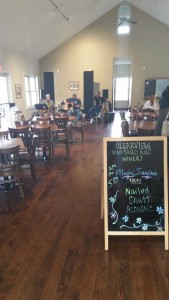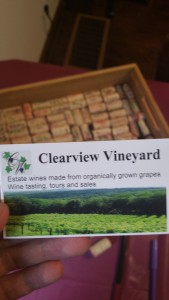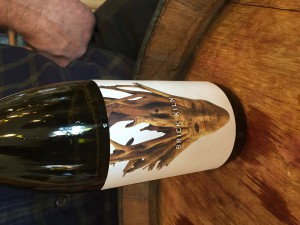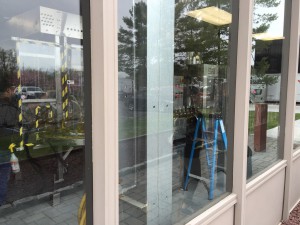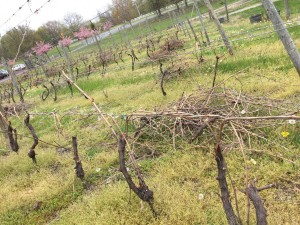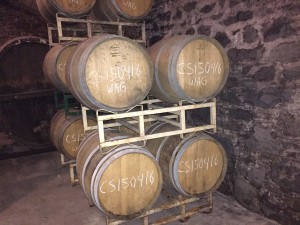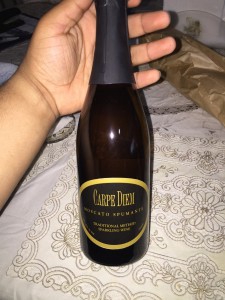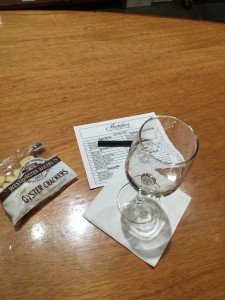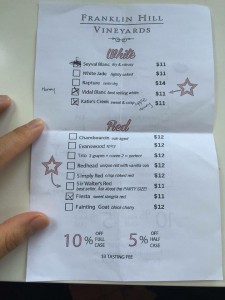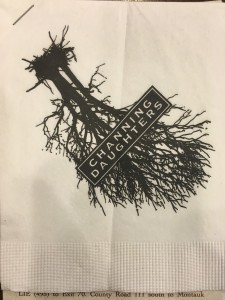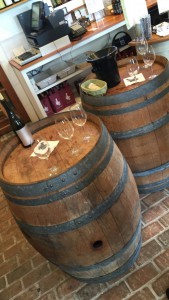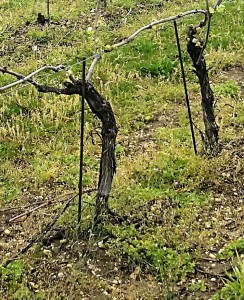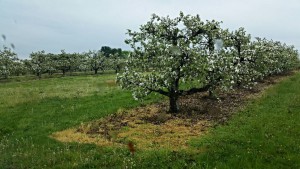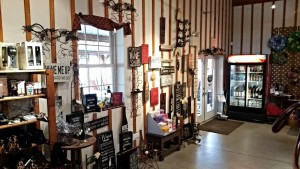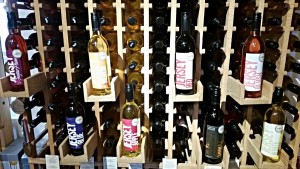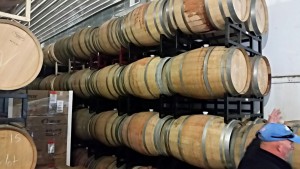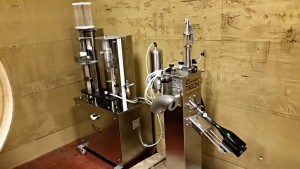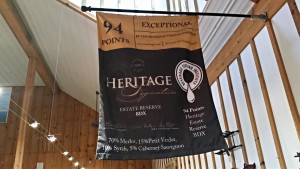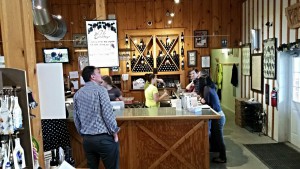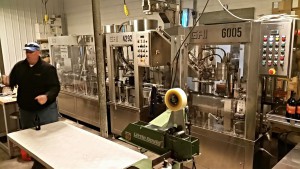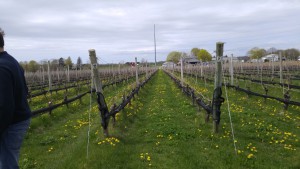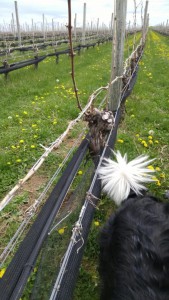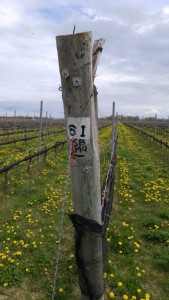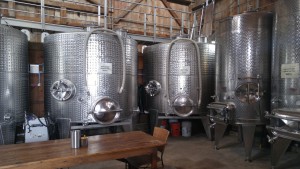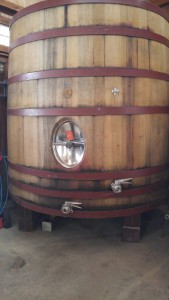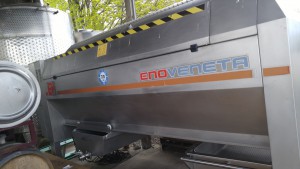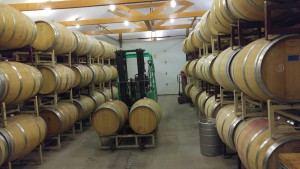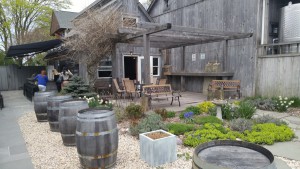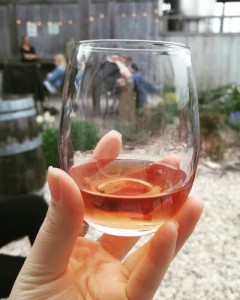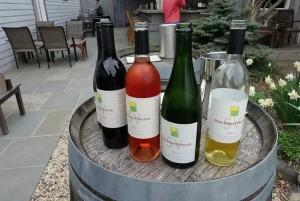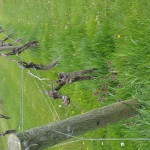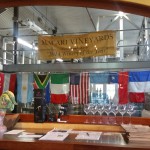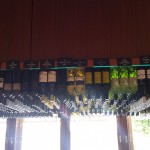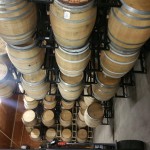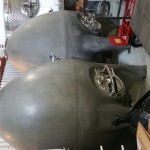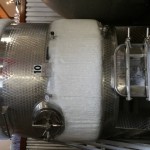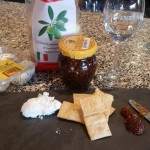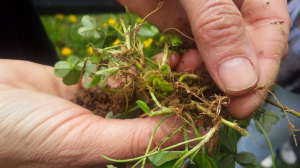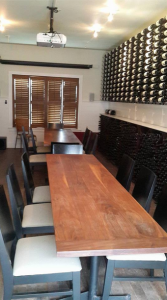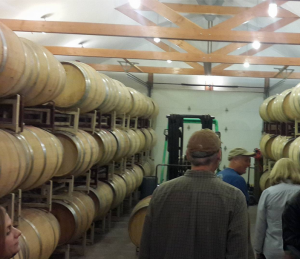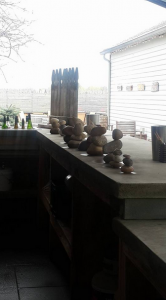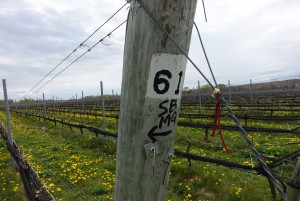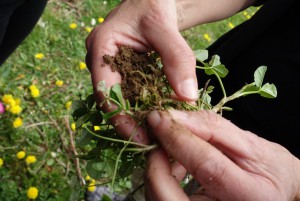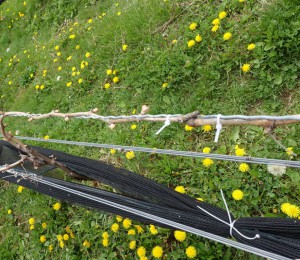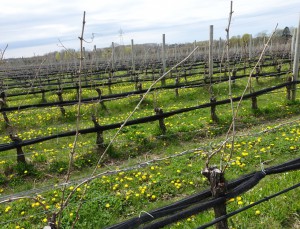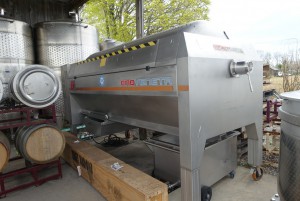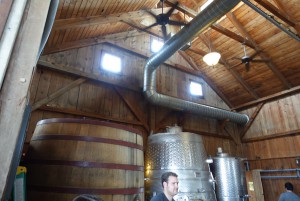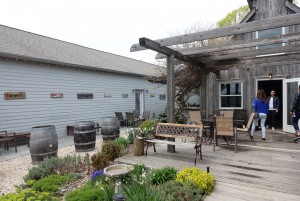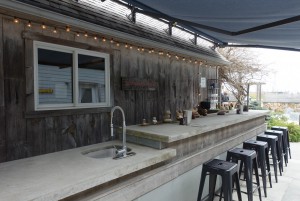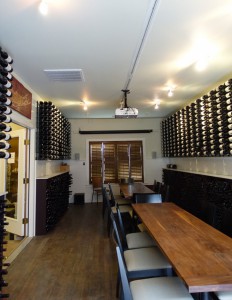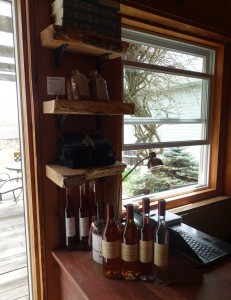We visited 2 different vineyards. Both were at Long Island and 10 minutes away from each other. They were Applewood winery and Clearview Vineyard. Applewood is a very large estate. We drove by many apple trees to get to the wine tasting area.
This was a very large estate with dining areas outside. There was also a cafe stand for those who wanted something to eat but the serving sizes weren’t too heavy. Some of us hadn’t eaten yet so we bought a one serving size pizza and a cheese sandwich.
The picture above was the tasting menu. Each person gets to choose 5 wines from this list to taste. I chose Wawayanda white, summerfields, Citrus cider, Ruby’s kiss and Blackberry. Surprisingly most of our choices were very similar. We were all curious about what the special names entailed rather than the grape named wines. It invoked a bit of curiosity from first-semester wine students like us because we were all familiar with the taste of wines like Chardonnay, Riesling, Merlot, but a name like Summer Fields or Ruby’s Kiss intrigued us.
The employee was very friendly towards us and knowledgable about the wines. We asked her about the estate and vineyards, that’s when she said that there wasn’t anyone around at the moment to talk to us about the vineyards. She works there as a bartender and she was very quick and responsive when we asked her about the prices and wines.
This wine bottle was the first of my tastings, It is called Wawayanda white. As we were smelling and tasting the wine, the bartender explained general details about the wine. She told us that it is a fruity white wine of mild intensity. It is grown in the Finger Lakes in cool climates. My second was the summer fields, she explained that it was a semi-sweet wine with melon to the nose. She mentioned peach and melon to the taste and the grape was a sauvignon blanc and full of citrus. I was able to smell the melon but I didn’t taste it. I tasted peach with a strong citrus taste and a light scent of alcohol. My third wine was the Citrus cider, She told us that it was made from champagne yeast and that it had notes of grapefruit and that it was a dry cider. Honestly, I couldn’t taste any other component except a strong sour taste overpowering everything else. She also mentioned that they only have an alcohol content of 6.8% and said it was similar to beer. My next and last wine I tried was the blackberry. She explained that it is a dessert wine with no grapes. It is all blackberries used in this wine and it is tart. My opinion of the wine is that it wasn’t very sweet for my taste and it was very tart. It reminded me of any organic no sugar added fruit juice mixed with alcohol. It was tart but not sour and not considered very sweet with a medium amount of alcohol. The reason I didn’t taste the last wine was because I had work after the vineyard visit so I gave up on my last wine, the Ruby’s kiss. I definitely regret it because Marissa had it as well and she said she really liked it. She said it was sweet and very fruity. She also mentioned that the alcohol wasn’t too strong to overpower the fruit in the drink. She even bought the bottle in the end for $12.99.
At Applewood we were told that they couldn’t give us a tour because they were busy and most importantly the people responsible for winemaking weren’t present at the time. However, we did take pictures of the a small amount of vines that were visible to the public after wine tasting. Also, when we were conversing with the bartender and told her that we were doing a project for our wine class at City Tech, she gave us brochures for Long Island Vineyards and told us about Clearview Vineyard. She said there was a really nice guy named Frank that likes to show people around the vineyards so we decided to take her advice and go.
When we entered Clearview Vineyard the atmosphere was very family oriented, similar to Applewood winery. There were people playing country music in the back and families enjoying a drink.
After we met Frank he brought us to the vineyard but said he couldn’t stay with us for long. He even allowed us to record him as he was explaining his estate to us. He also said they grew their grapes organically for the first 7 years but they couldn’t continue the practice because of a disease called the “black rot.” He mentioned that it impacted 3 of their varieties really badly. A year and a half ago they stopped being organic. He said it didn’t make a difference anyways because they have to use metabisulfite in order to keep the wine at their best qualities and if you don’t use it, the wines can change in taste. He said that in Europe they can still use the a certain amount of metabisulfite and still be called organic but in the US this isn’t the case and he made a quick note saying it was foolish. He then brings us to the vines and told us that they use poles with eagle kites on top of them to scare the small birds and turkeys away. They also put out CDs for sun reflection and scare balloons with eyes drawn on them to keep most of the bird predators out. Some of the grapes they grow are sauvignon blanc, Cayuga white, Vidal blanc, cabernet franc, Monet, Baco Noir, Noiret and New York 81; he said that they call it “divinity” because there isn’t a name for it yet. He also told us that New York 81 was a hybrid developed by Cornell. Frank continues to say that they try to be as organic as possible. They don’t spray anything for bugs and they only spray for diseases like black rot. His last comments were that they strategically wire the vines so they get the right amount of sunlight and that they do a majority of their work manually.

